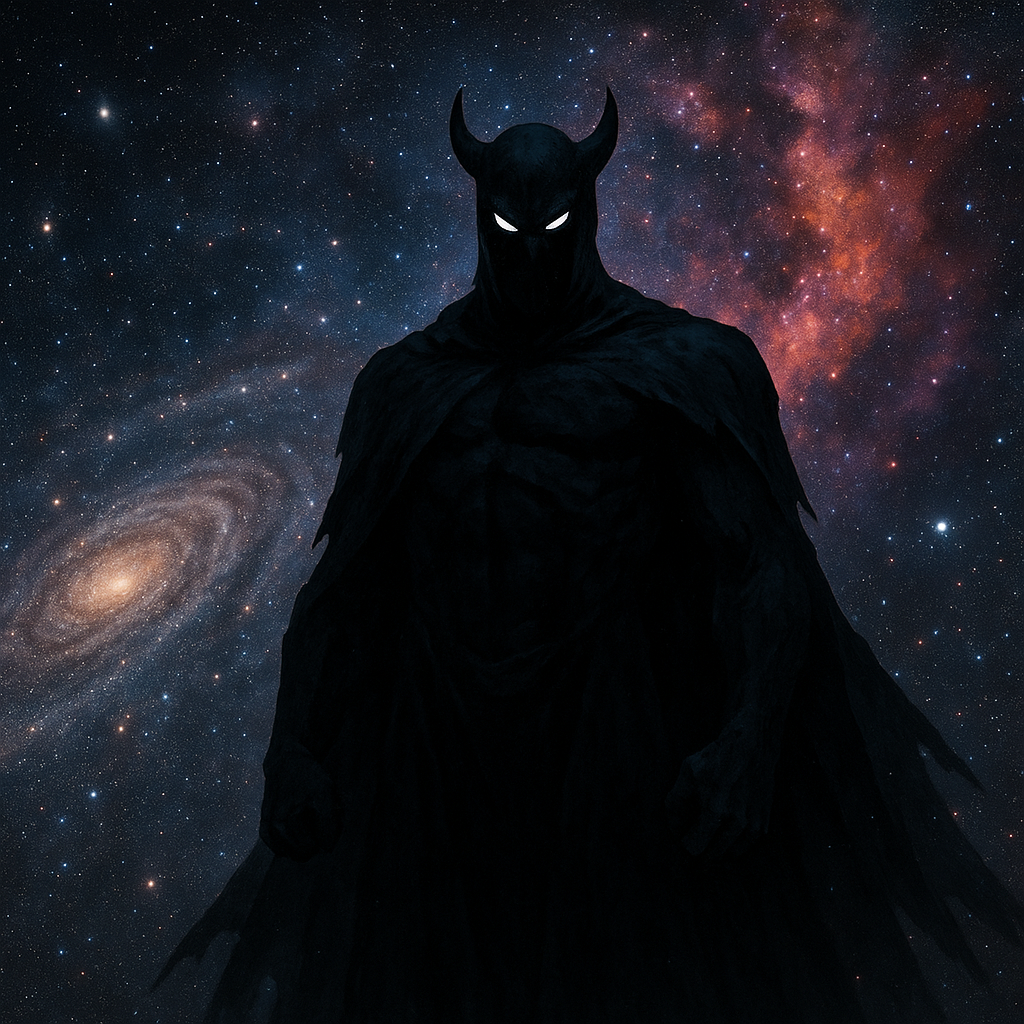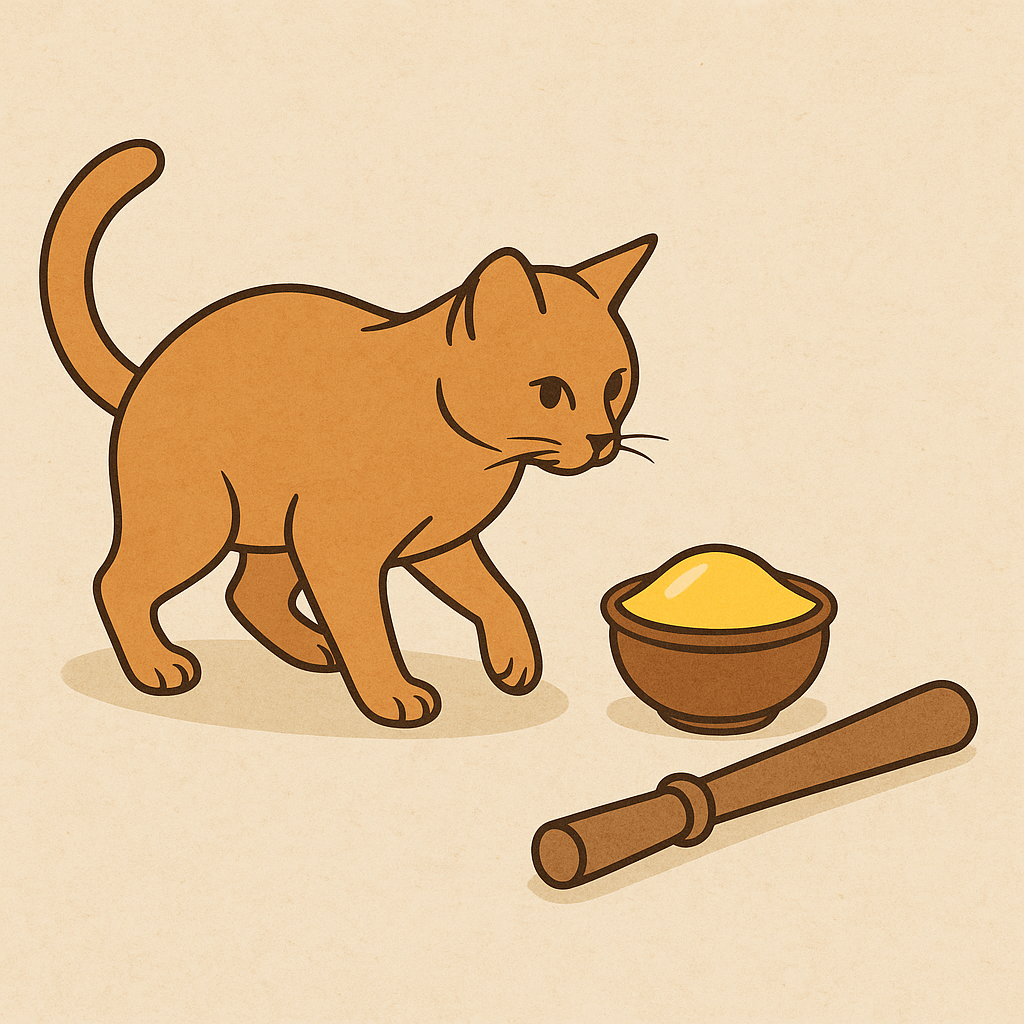The Quiet Enemy That Steals Your Time and Peace
Every great story needs a hero and a villain. In Greek mythology, Hercules fought the Hydra. In the tale of David and Goliath, the shepherd boy faced the giant. In the Indian epic Ramayana, Ram battled Ravan. And in the beloved film Sholay—which recently completed 50 years, yet remains iconic—Jai and Veeru stood against Gabbar Singh.
In our own lives, people often miss the most dramatic truth: each of us is the hero of our own epic. No boss, no superior, not even a god takes that role—it belongs to us. We chase goals, uphold values, and strive toward milestones. Along the way, we battle many antagonists—deadlines, distractions, and doubt. Yet there’s one villain we all share, no matter who we are or where we live. It doesn’t roar like Gabbar Singh. It doesn’t wield ten heads like Ravan. It creeps in quietly, everywhere. That villain is ENTROPY.
In physics, entropy is the natural tendency of systems to move from order to disorder. Left unchecked, your clean desk gathers dust, your files scatter, and your inbox overflows.
Think of an ice cube: stop feeding energy to keep it frozen, and it melts. The lesson is simple—only effort and energy can hold disorder at bay. As Stephen Hawking explained:
The increase of disorder or entropy is what distinguishes the past from the future, giving a direction to time.
Entropy isn’t something you invite. It sneaks in, and only deliberate action keeps it from pulling everything toward chaos.
Let’s see how Entropy Shows Up in Daily Life
- A freshly cleaned kitchen turns messy in days.
- Your phone storage, once spacious, mysteriously fills up.
- Social media feeds grow noisy, no matter how carefully you curate them.
Entropy is the invisible hand that nudges life toward clutter. Unlike Gabbar Singh, it doesn’t announce itself—it whispers. And slowly, disorder begins to feel like the default.
We can’t eliminate entropy—it’s woven into the fabric of the universe. But we can resist it. The trick is not to wait until disorder grows colossal, demanding back-breaking clean-ups. Instead, we build systems where the smart bare minimum effort keeps things organized. A few seconds spent filing a document today can save hours of hunting tomorrow. A simple habit of clearing your inbox daily prevents the crushing overload that otherwise builds up and buries important information somewhere deep down, away from our eyesight.
Every act of cleaning, sorting, or organizing is a rebellion. It’s our way of declaring: “I choose order over disorder.”
Being organized is more than a tidy desk. It’s about clarity, calm, and conserving energy. It’s about designing systems that keep entropy in check with the least friction possible—so your life runs smoothly without requiring heroic effort each time.
Let’s pause and think, why Be Organized? Because order gives us superpowers:
- Save Time – Less searching, more doing.
- Reduce Stress – Order brings calm.
- Boost Productivity – With a fully functional work environment, energy isn’t wasted on chaos.
- Conserve Resources – Fewer duplicates, cleaner storage, less waste.
Organization is how we push back against entropy. With the right systems, the key is consistent effort—small and steady—that turns staying organized into a manageable trickle, preventing the tidal wave of disorder that otherwise makes things non-functional and demands colossal clean-ups.
Entropy may be a universal law, but it doesn’t get the final word. Every small act of organization—decluttering a drawer, taming your inbox, structuring your files—is a heroic act.
So the next time you tidy up, remember: you’re not just cleaning. You’re designing a system where minimal effort holds back maximum chaos. Think of some key common spaces that can be organized:

You’re proving that order, clarity, and progress are worth the investment.
Multitasking: Misunderstood and Underrated
Multitasking. The word itself often sparks frowns. Distraction, half-done work, and errors have given it a bad reputation. But here’s the twist: what people usually condemn isn’t multitasking at all—it’s what many call multi-focusing.
Trying to write an email while also solving a complex problem, or talking to someone on the phone or staying on a chat during a meeting, splits your attention and guarantees shallow work. Our brains can’t give deep focus to two demanding tasks at once.
The real story of multitasking is different—and far more useful.
Pairing a mental activity with a physical one often works beautifully.
- Listen to an audiobook while walking.
- Reflect on ideas during a workout.
- Stretch while on a routine call.
Even two light physical activities can complement each other—like cooking while listening to music or walking while sipping coffee.
In Get Up, Dr. James Levine introduces NEAT (Non-Exercise Activity Thermogenesis)—the everyday movements that keep us healthy. One of his key suggestions: after every meal, do a NEAT activity for 15 minutes. Why NEAT? Because it’s these small, consistent movements that prevent long sitting, keep metabolism active, and support overall well-being.
I tried it. After breakfast, I head to my balcony garden. I check on each plant, remove weeds, trim old leaves, water where needed, and sometimes spray neem oil to fight pests. What could have seemed like gardening chores — and risked becoming another task people tend to dislike and skip — turned into a perfect NEAT activity.
After lunch or dinner (I work from home), I switch to small organizing tasks around the house. At first glance, these look like little chores or “time fillers.” But when reframed as NEAT, they become energizing and purposeful.
Of course, on some busier days, I might not have the luxury of time and have to be at my desk; I don’t drop my NEAT commitment, and I use my under-desk elliptical while working.
One more example from my daily routine: I often keep the radio on while I work. The music soothes me and refreshes my mind subtly while I code, handle small reading, or do light writing. That’s good multitasking—mental work paired with a light sensory background.
But when I have to read or write something complex, I switch the radio off. That’s the moment it crosses into multi-focusing, where my brain would struggle to split attention.
This simple switch—knowing when multitasking helps and when it hurts—makes all the difference. This is multitasking done right.
A Practical Takeaway
Try a 7-day NEAT + multitasking experiment:
- After each meal, spend 10–15 minutes on a light physical task.
- Choose activities that matter to you—watering plants, tidying up.
- Or if you go to the office for work, arrange a task that can be done while walking, such as a discussion with a colleague or boss. Or simply do whatever, but do not use the chair for those 15 minutes
- Notice the lift in energy, focus, and satisfaction.
- Bad multitasking = multi-focusing (splitting mental bandwidth).
- Good multitasking = complementary activities (mind + body, or body + body).
Once you see the difference, multitasking transforms from a productivity villain into a secret weapon.
Subscribe to my newsletter, to get tips like this and more, directly in your inbox!
Sweet Goals, Hidden Costs: A Better Way to Choose Commitments
There’s an old Indian proverb:
“Ghee dekha, par badga nahi dekha.”
You saw the ghee (clarified butter), but missed the cudgel waiting nearby. The image is of a cat spotting a pot of ghee and rushing to lick it, unaware of the cudgel placed close at hand, ready to strike. In folklore, it’s a warning: don’t rush to grab the sweet reward if you’re blind to the stick that comes with it.
In the context of time management, it becomes a useful filter. Every opportunity — a hobby, a project, a side hustle — comes with a cudgel: the hidden cost. The question is: are you saying yes to ghee with a cudgel or ghee with no cudgel
For years, I wanted to learn to sing. But it always felt like ghee with a cudgel — sweet but disruptive. It would have taken time away from swimming, writing, my day job, and my coaching practice. Holding back wasn’t procrastination; it was prudence in how I chose to use my time.
Recently, things shifted. Appearing as a guest on podcasts made me conscious of my voice. I wanted to sound more professional and address certain shortcomings. While exploring how, I discovered The Voice and the Actor by Cicely Berry. The book recommends singing as a way to develop breath control — the foundation of a strong, clear voice.
That was the turning point. Singing wasn’t just a hobby anymore. It became directly relevant to my coaching and public speaking. What once was ghee with a cudgel transformed into ghee with no cudgel.
And as I write this, the reality of the cudgel is right in front of me. I have a stage show just a few days away. I’ve already rehearsed my song dozens of times, and I know I’ll probably cross a hundred repetitions before the performance. It reminded me why I was right not to take up singing earlier, when it didn’t align with my rhythm. Now, the same effort feels purposeful because it directly strengthens my vocation.
Before saying yes to something new, run it through this filter:
- Is this ghee with a cudgel?
Sweet on the surface but disruptive to my rhythm. If yes, decline. - Is this ghee with no cudgel?
An effort that aligns naturally with my goals and strengthens my priorities. If yes, commit.
Time management isn’t about doing everything that looks tempting. It’s about choosing only those that align closely with your life goals and overall rhythm. That simple filter preserves your focus, protects your rhythm, and makes every “yes” sustainable.
Subscribe to my newsletter, to get tips like this and more, directly in your inbox!
(Originally published in Times of India on August 16, 2025)
What They Don’t Teach You About Managing Time — Until It’s Too Late
“If I had to do my education over again, and had any voice in the matter, I would not study facts at all. I would develop the power of concentration and detachment, and then with a perfect instrument I could collect facts at will.”
— Swami Vivekananda
Swami Vivekananda was emphasizing the importance of learning how to concentrate — a foundational ability that should be developed before diving into the pursuit of knowledge.
Inspired by that thought, I’d like to propose something similar:
Learn time management before you take on high-stakes, high-impact responsibilities. Before you lock horns with towering demands, equip yourself with the ability to manage your time, tasks, and energy well.
At some point in most careers, the demands start piling up. You’re doing more, achieving more, and being pulled in multiple directions. But quietly, something begins to give:
- Work responsibilities multiply
- Family and personal obligations intensify
- Your own health takes a backseat
- Time feels scarce, and balance slips away
And yet, amidst this growing complexity, we rarely pause to ask:
Do I have the system in place to carry this load?
Despite how essential time management is, it’s rarely treated as a core skill in formal education or professional training.
We’re trained in tools, platforms, domain knowledge, and even communication — but rarely in how to manage our time, attention, and energy effectively. This leaves many professionals to figure it out through trial and error — often after they’ve already hit overwhelm.
We often think of time management as a way to fit more into each day — to be faster, more efficient, more productive. But in truth, it’s about creating a system that clears mental space. A system that helps you organize. At first glance, being organized and managing time might seem like two separate skills. But at a deeper level, they are tightly connected.
Time is a limited resource — we all know that. And if we fail to use it judiciously, we risk disappointing our stakeholders, our teams, and ourselves. But here’s the catch: you can’t use time wisely unless you have a clear view of everything you’re expected to do.
That clear view — or inventory of commitments — is what being organized gives you. It includes both the work itself and the material needed to do it well.
Once you’ve organized these two core elements — your tasks and your material — you finally have a fair shot at making the best use of your time. Only then can you be truly productive and reduce the hidden stress that comes from chasing tasks in the dark.
But what exactly does “being organized” mean in practice?
It goes far beyond clearing your desk or sorting your inbox. It’s about bringing structure to the full range of things that pull on your attention — from daily to-dos to long-term goals, from digital files to mental clutter.
Here’s a comprehensive look at what can (and should) be organized:
🧩 What Can (and Should) Be Organized
🎯 Immediate Priorities (Present Focused)
- Daily to-dos
- Weekly and monthly planning
- Routines (daily, weekly, monthly, yearly, occasional)
- Project-specific actions
- Delegated tasks
- Calendar management
- Social media presence/scheduling
- High-value networking
🧠 Thinking Space (Mental Clarity)
- Ideas and insights
- Mind maps and brainstorming
- Journal of work done (daily log or reflections)
- Back-burner items (not urgent, but important someday)
🎯 Near-Term & Life Goals
- Job-related commitments and deliverables
- Health goals and habits
- Financial management (family budgeting, investments)
- Home environment tasks and improvements
- Spiritual practices
- Recreation and leisure (active planning)
🚀 Long-Term Direction
- Emerging responsibilities at work
- Career transition milestones
- Major life transition milestones (parenthood, retirement, relocation)
💻 Digital Life & Devices
- File folders (local and cloud-based)
- Email inbox and folders
- Browser bookmarks and reading list
- App and document shortcuts
- Smartphone gallery (photos, videos, screenshots)
- E-books, audiobooks
- YouTube videos or playlists of interest
- Family media (archival photos and videos)
📚 Reference & Knowledge Base
- Resume and career documents
- Personalized how-to guides and checklists
- Notes and action items from books
- Course notes and learnings
- Login credentials and password manager
- Personal Knowledge Management (PKM) system
- Organizational Knowledge Management (OKM) resources
💬 Communication Infrastructure
- Meeting agendas and preparation
- Meeting minutes and discussion notes
- Email and message templates
- Follow-up trackers
🏡 Personal Life & Physical Environment
- Hobbies and creative projects
- Bills, subscriptions, and renewals
- Shopping lists, travel plans
- Health checkups and medical appointments
- Fitness routines and progress tracking
- Physical space: desk, drawers, wardrobe, bookshelf
- Mnemonics and memory aids
- Reading list and watchlist
- Alarm and reminder setup
You don’t have to organize all of this at once. Start with just one area that’s causing you the most friction or distraction. Because the goal isn’t perfection — it’s clarity, control, and calm. This kind of organization doesn’t just help you “get things done” — it helps you think clearly, act intentionally, and stay calm under pressure.
Subscribe to my newsletter, to get tips like this and more, directly in your inbox!
How to take care of your health while you are busy setting new records of productivity – 3
In the first two parts of this series, we explored physical exercises and the art of restorative breaks. Part 1 focused on how to integrate static and dynamic stretches into a high-performance schedule, and Part 2 looked at how to rest without guilt or downtime regret.
Now, let’s talk about something you’re probably doing right now — sitting.
The Hidden Enemy in Your Workspace
We sit to work. We sit to eat. We sit to relax. And that’s the problem — we’re sitting too much. Dr. James A. Levine, a physician and researcher from the Mayo Clinic’s research shows that modern humans are sitting for over 13 hours a day, and it’s silently damaging our health.
Sitting for long periods:
- Slows metabolism
- Increases risk of heart disease and diabetes
- Even shortens lifespan
And worst of all? You can’t exercise your way out of it. One hour in the gym can’t undo 10 hours in the chair.
Movement as a Mindset
The real antidote, according to Dr. Levine, is NEAT — Non-Exercise Activity Thermogenesis — the small movements we do all day: pacing during calls or walking to a colleague’s desk. These micro-movements add up to better health and sharper focus. You’re not just burning calories — you’re keeping your body’s systems alert and oxygen flowing.
💡 Usable Idea #1: Post-meal Walks
One of the most powerful yet underestimated NEAT activities is taking a slow 15-minute walk — around 1 mph — after each meal: breakfast, lunch, or dinner. This simple act helps your body process the post-meal blood sugar spike more efficiently. Instead of forcing your system to work overtime while you’re sedentary, you’re matching energy output with intake — easing the metabolic load and promoting better glucose control.
💡 Usable Idea #2: Reclaiming 2 Hours and 15 Minutes at Work
Dr. Levine’s experiments showed that office workers could gain up to 2 hours and 15 minutes of walking a day by making small, strategic changes.
Here are practical ways to sneak movement into your day:
- Stand up and pace while on the phone
- Hold walk-and-talk meetings
- Move your chair to encourage standing
- Sit on a stability ball
- Use a mini-stepper in conference rooms
- Relocate trash cans and printers farther away
- Keep hand weights at your desk
💡 Usable Idea #3: NEAT Boosters for Work-from-Home Professionals
One of the best work-from-home NEAT boosters is an under-desk cycle or elliptical. It allows you to pedal gently as you attend meetings, write emails, or brainstorm. Since there’s no dress code or office decorum to hold you back, you can use it as often as you like.
If you work from home, you actually have a golden opportunity — no awkward stares, no workplace restrictions. You can move freely, experiment, and even invest in tools to keep your body in motion while staying productive.
What to look for when buying one:
- Smooth and quiet operation (essential for calls and concentration)
- Clear area under the desk: Make sure the floor space under your desk allows for natural pedaling motion without obstruction. This means accommodating the full dimensions of the machine — length, height, and width — and confirming there’s enough clearance for your legs to move comfortably. Don’t rely on product photos or assumptions; physically measure the space under your desk to ensure a good fit.
- Prefer an elliptical if you have less vertical clearance than a cycle.
- Opt for a portable model with a handle and wheels, so you can easily move it for cleaning or relocate it to the TV room. This way, you can sneak in some exercise while enjoying your favorite show — with far less guilt.
Popular brands from my study:
- Cubii (known for whisper-quiet operation)
- DeskCycle (good for taller desks and strong resistance options)
Remember the purpose behind using these machines: they’re not meant for building muscle or high-intensity workouts. They exist to support NEAT — gentle, consistent movement throughout your day. It’s not about pushing your limits, but about staying subtly active while you work.
Plan Your Escape from the Chair
Bringing NEAT into your daily rhythm requires intentional design. Take time to reflect on how you spend your hours at work and at home — and redesign your environment and habits to include movement in as many touchpoints as possible.
Credits:
This post incorporates insights inspired by Dr. James A. Levine’s book Get Up: Why Your Chair Is Killing You and What You Can Do About It — a thought-provoking read that sheds light on the silent risks of our sedentary lives.
(Subscribe to my newsletter, to get tips like this and more, directly in your inbox!)
Get Up!: Why Your Chair is Killing You and What You Can Do About It by James A. Levine
 Get Up!: Why Your Chair is Killing You and What You Can Do About It by James A. Levine
Get Up!: Why Your Chair is Killing You and What You Can Do About It by James A. Levine
My rating: 3 of 5 stars
We all know that sitting too much is bad—but few of us do anything about it. The first wake-up call for me came from a powerful video by Marcus Rothkranz. It was intense—but this book seems to have been the final nail in the coffin… or should I say, the chair… of my sitting habit.
Dr. James Levine, a leading researcher at the Mayo Clinic, moves the conversation from awareness to action. His writing is grounded in decades of research, and he draws from countless experiments, stories, and insights into how modern life quietly trains us into “chairaholics.”
The chapter on how even “play” has been taken over by the chair thanks to screen addiction was both funny and frightening.
The key concept in teh book is about NEAT (Non-Exercise Activity Thermogenesis)—the energy we spend doing everything other than deliberate exercise. It’s the difference between folding laundry and watching TV, walking after meals or scrolling through your phone. Levine makes a compelling case that NEAT—not gym time—is what keeps active people healthy and happy.
The encouraging part? The transformation begins with a single step—literally. A chair-bound brain can rewire itself into a walking brain in just three weeks. Through the lens of cue, response, and reward, Levine helps individuals and organizations break free from chronic sitting. He also acknowledges that everyone’s approach—what he calls a personalotype—will be unique.
Highly recommended for anyone who wants to stay productive—without letting their health pay the price—and for those leading workplace well-being initiatives in their organizations.






